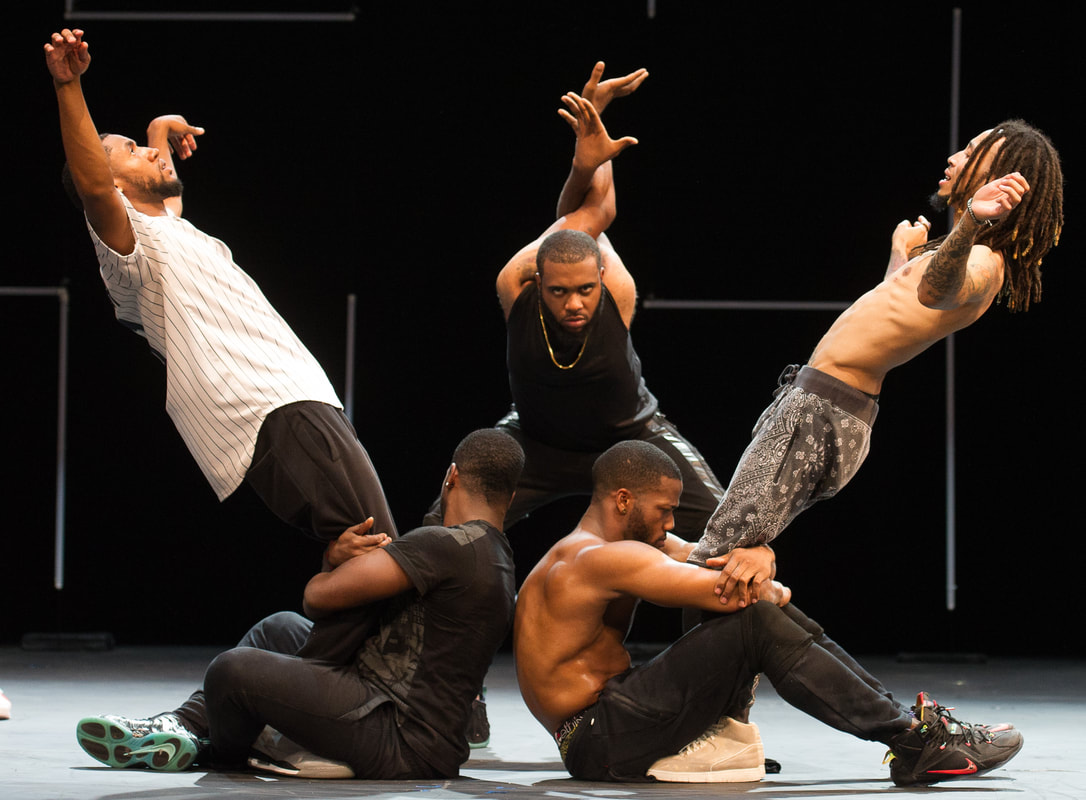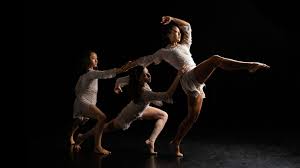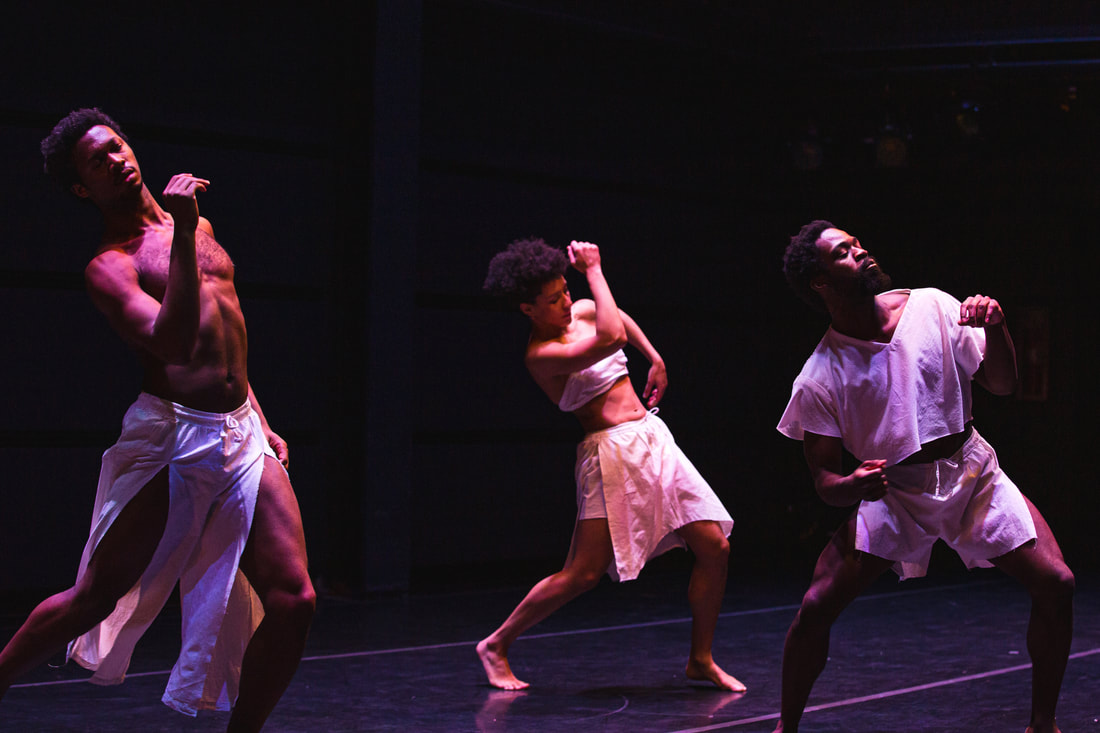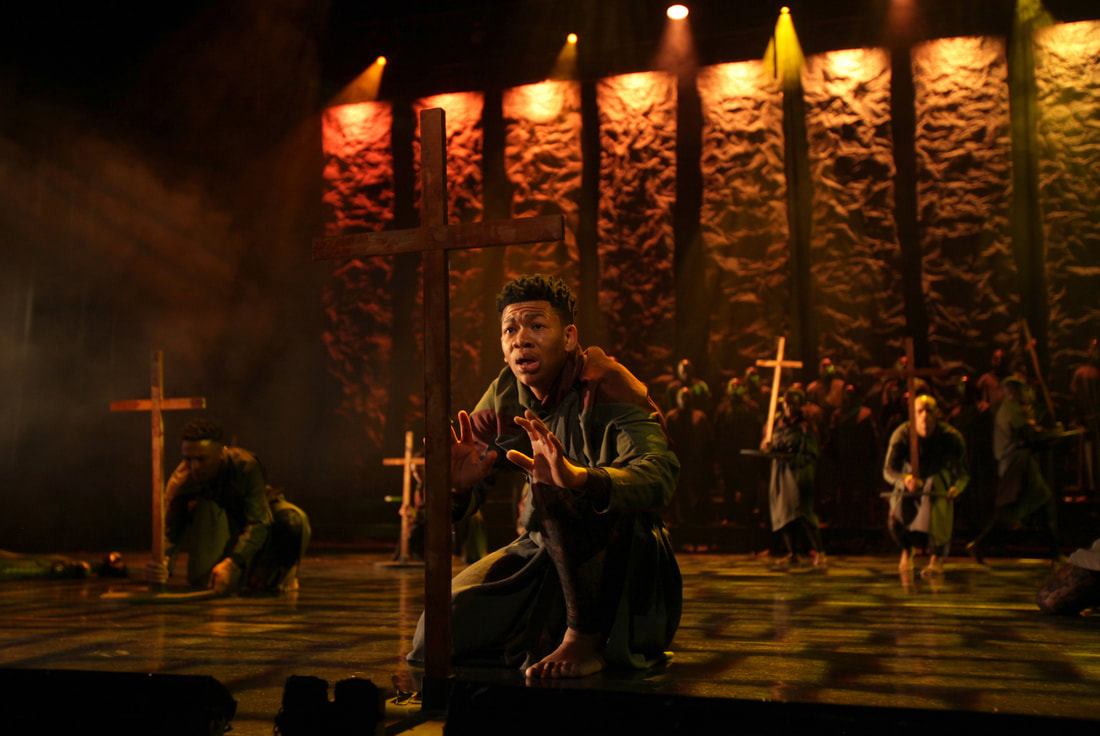|
Brooklyn-based Flex Ave performed on Friday night at The Egg. No matter what style of dance one practices, bad choreography will defeat the dancer every time.
That sums up what happened on Friday night at The Egg where a crew of decent dancers with potential were marooned by amateur choreography. Flex Ave, an ensemble of flexing or bone-breaking dancers from Brooklyn, is made up of styling street dancers that can bust some astounding moves with individual flair. But paired with literal choreography by Reggie “Regg Roc” Gray and Corey “Gutta” Batts, which directly express the music as opposed to enhancing it, wrung out Flex Ave’s capabilities early on. The beginning was promising, however. A dancer in a spotlight glides along on the tips of his sneakers like a ballerina en pointe. His grace was prodigious and captivating. But the eye was pulled from him as the light rose up to reveal other dancers engaged in street play – jump rope, hop scotch and dice – casting them in an urban environment where the dance was born. Much of what followed was aimless – well-executed moves that did not spin a thread of emotion or narrative to coalesce the one-hour show. There was one section on suicide that I found rattling and powerful. It was set to rap music that spoke the point of view of the one who takes his life and then the one left behind. The lyric told the tale, thus all the dancer had to do was express the despair, anger and grief – which street dance can do well. But the dancers were boxed in by plainly dancing out the lyric – a missed opportunity. I couldn’t help but think about Rennie Harris, the first to put urban American street dance on stage. His genius was leading break dancers beyond the wow factor and into territory that could speak to all humankind. His stories from the streets spoke of love, joy, generosity, want, hatred and agony. Flex Ave can’t touch Harris’ artistry. But because Flex Ave’s dancers have the moves – including ones that look like arms are broken or detached (this was difficult to watch) – I think they can get closer to attaining that. The point is for Flex Ave to stop gliding along the surface, to go deeper into their vulnerabilities. Honesty from the artist is the place where connection is made. It can’t be forged with power moves alone (which are thrilling, but hollow). Show me the person behind the move and then the move will not only make more sense, it will enrapture me.
0 Comments
Christopher K. Morgan and Artists are working on a new piece at the Experimental Media and Performing Arts Center at Rensselaer. There is something comforting about the art of choreographer Christopher K. Morgan. It only makes sense then that for his latest work fermenting at the Experimental Media and Performing Arts Center at Rensselaer, he would embrace the fiber arts. His new dance, the-yet-to-be completed “Native Intelligence/Innate Intelligence,” swirls in soft woven fabrics.
Of four parts shown on Thursday night with his Christopher K. Morgan and Artists, three were wrapped into sculpted macramé ropes that enhanced the dance’s fluidity and expanded the gentle movement beyond the body. Add to that the resonating cello, as composed by Wytold, and a table full of delicious snacks where audiences were free to graze, all were instantly seduced into Morgan’s warm world. It was a place where one seeks to reconnect and give relevance to ancestral culture. It was also inviting, and at EMPAC, it became a salon showing at its most modern. Morgan has once again drawn from his Hawaiian heritage for this work-in-progress. Hawaiian chants and hula, that show reverence to the Earth and to all humankind, punctuate into Morgan’s work. The movement appears as if he is opening a door, pulling something toward him or racing forward to capture the fleeting past. His solo was especially alluring as he seemed to transform into an eagle – allowing his large shawl to span out and then coil around him before falling to his feet. Morgan has a way of making the simple, beautiful and dignified. He and his dancers are thoroughly charming. The first section of his unfinished work showed the dancers at their best, converging and dispersing in the most interesting ways. Forming a human sculpture, with limbs entwined and hands, heads and feet melding in all directions, served as a testament to the body’s ability to be endlessly fascinating and, if open, the spiritual attachment we should feel to each other. In another section, Tiffanie Carson escapes her physical trappings, but is held back by the group who take her emotional temperature with hands on her heart. The lightening design is also gorgeous with color lighting up the floor in reds and blues. There is much to see and consider in “Native Intelligence/Innate Intelligence.” And I do hope, once complete, it returns to EMPAC for a full airing. Snacks are welcome too. Kyle Marshall Choreography in "Colored," with from left Marshall, Myssi Robinson and Oluwadamilare Ayorinde. (Photo by David Gonsier) One can’t hide the color of one’s skin. And for people of color that means carrying the burden of society’s preconceived notions.
Choreographer Kyle Marshall reflects on that and more in “Colored,” a work that delves into stereotypes. Performed on Saturday night at UAlbany Performing Arts Center, Kyle Marshall Choreorgraphy portrays the load of racism as one that people of color manage through unity. But the toxicity is epidemic. No person of color survives unscathed. The piece, with Marshall, Oluwadamilare Ayorinde and Myssi Robinson, begins like a prayer. The trio stand in a circle, holding hands, heads bowed. As they break away, a ticking, like a clock, has them waving their hands, a gesture showing their cool as they go about their individual lives. The dancers draw us in further as Robinson talks about caring and styling her hair. Her narrative surveys products, people’s responses and how her white mother didn’t know what to do with her mane. As she speaks, she moves toward the audience, settling at the feet of those in the first row where she sculpts her locks into nobs, creating an intimate moment for those close to her, but a frustrating one for those who can't see her. As the dance progresses, the movement suggests seamless support, mutual trust and a joy within that. But the movement also shows that maintaining the support can be complicated. With the music by M. Clegg becoming mangled, like listening to a stretched out cassette tape, the dancers begin to stumble and twist. Their joined hands are now a liability. When their hands form the shape of a gun, Ayorinde goes down. As Robinson mourns, alone, the lights go down. “Colored” begs for more conversation on how prejudice can distort those it targets. But what I found most interesting about the work is that it tells a story in post-modern dance language. Marshall is a Trisha Brown Dance Company member and one can see the influence her clinical style has on his work. Brown sought to free movement from meaning and narrative. Marshall is embracing it. While “Colored” was not the most damning work out there on the ills of racism, it shows that Marshall is moving the art of dance in an untried direction, adding depths and dimension to the style. And for that, he’s worth keeping an eye on. The evening at UAlbany also featured “Horizon,” a duet for Marshall and Miriam Gabriel. In a curtain introduction, Marshall said the dance was meant to explore the relationship between a black man and a white woman. I found the piece too obtuse to fully enjoy. The red and blue costumes by Gabby Grywalski indicated that the two are opposites, but the movement - the man with swinging hips and the woman with stomping feet – didn’t lead my mind in any one direction. I was searching for meaning when I should have let the movement wash over me. Once again, those preconceived notions can destroy more than enlighten. Vuyani Dance Theatre performed its tour de force "Cion: Requiem of Ravel's Bolero" at MassMoCA on Saturday night. It started in blackness with the sound of weeping – muted and gentle at first but then it grew into a full-fledged wail – one that echoed through the Hunter Center at MassMoCA on Saturday night.
As the lights rose, the audience saw the mourner shuffling among crosses – a graveyard that encircled the stage and set up Gregory Maqoma’s powerful and resonate “Cion: Requiem for Ravel’s Bolero.” As performed by nine ardent and talented dancers from South Africa’s Vuyani Dance Theatre along with four amazing vocalists from Soweta’s Gospel Choir, the work is a haunting indictment of religious authority in a world filled with despair. And while there were glimmers of joy and even hope, the piece is a cautionary tale, one that exhorts us all to wake up to the pain in the world that we ourselves are upholding – often by our unconscious neglect and indifference. Dancer Otto Andile Nhlapo danced the central role – a potent priest who in the first minutes demonstrated his sway with a wave of his arm that moved the others to do his bidding. He presided over the ensemble that was at first meek but allowed the pain and anger to bubble up and over into a cauldron of ferocity. After submission, with imagery akin to communion, the dancers turned on the priest – pounding on him and eventually taunting him. And this was just the beginning. The music for the journey into grief was outstanding. At first, the four voices from the quartet – Simphiwe Bonongo, Xolisile Bongwana, Sibusiso Shozi and Thabang Mkhwanazi – sounded so precise and so substantial, I was certain it was a recording of a large group of singers and musicians. But when the lights rose up on them, I could see that it was from these gifted vocalists doing the broad soundscape purely a capella. When they created Ravel’s iconic “Bolero” with their voices, I was stunned. That in itself was a worthwhile listening experience - an orchestra of sound from four. Back to the dancers – they performed this miracle with Maqoma’s unique language that combined modern, ballet, African, street, martial arts and tap dance. Nhlapo’s role was a tour de force, requiring him to be onstage nearly the entire 70 minutes -- working out his character’s inherent cruelty to find a place where love can seep in. While Nhlapo was engrossing to watch, every second of the ensemble work was enthralling. It shouted pain, especially during the section where they are pounding the floor with a bundle of cloth. Their unity, honesty and willingness to go for broke was mesmerizing. There was no way to turn from its awesome might. “Cion: Requiem for Ravel’s Bolero” is an amazing artistic achievement and one that makes me curious as to what else is out there in modern African dance. For decades, the only thing American audiences saw were the traditional dance and music troupes. While those groups are rightly beloved, I want to see more Vuyani and those like it from Africa. Obviously, the mysterious continent has much to offer. |
Wendy
|




 RSS Feed
RSS Feed
